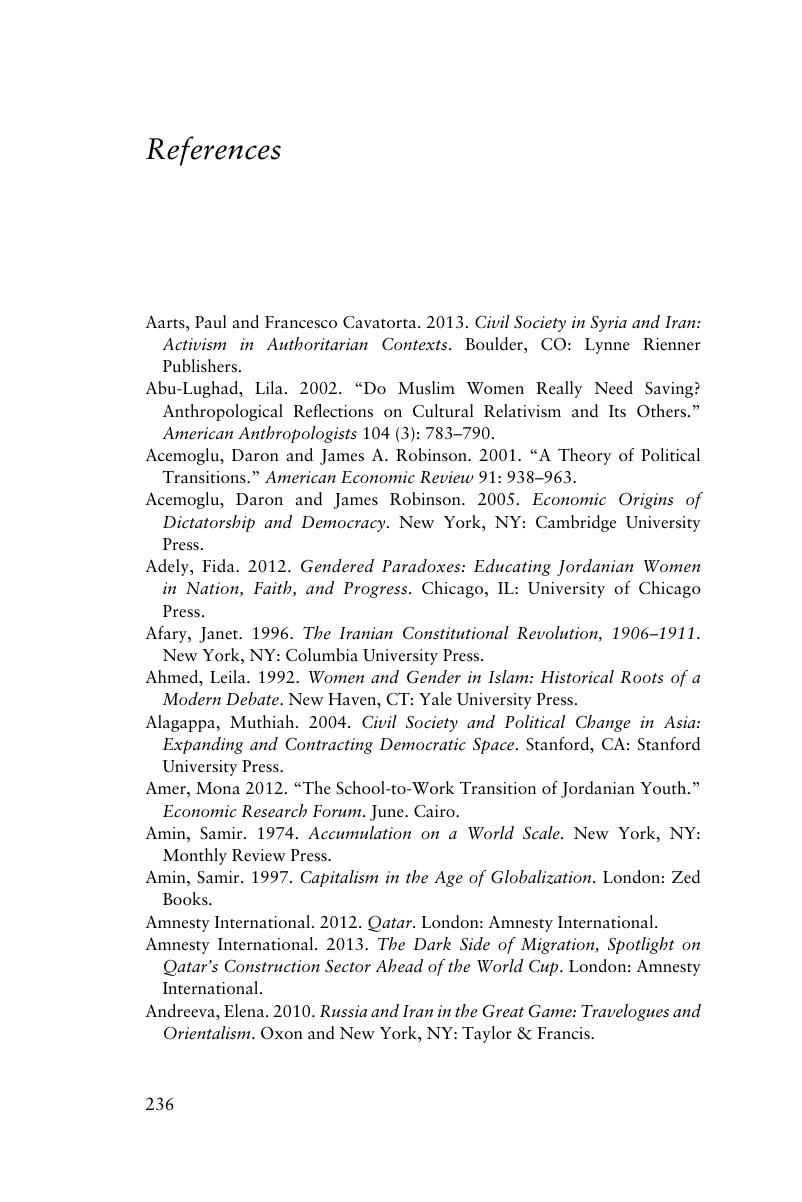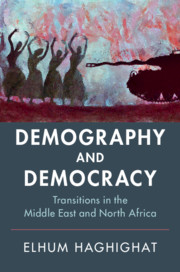Book contents
- Demography and Democracy
- Demography and Democracy
- Copyright page
- Dedication
- Contents
- Figures
- Tables
- Author’s Note
- Acknowledgments
- Part I Introduction and Fundamentals
- Part II Global and MENA Demographic Transitions
- Part III Contemporary Dynamics and Dimensions in the MENA
- Part IV Case Studies and Conclusion
- Glossary
- References
- Index
- References
References
Published online by Cambridge University Press: 19 October 2018
- Demography and Democracy
- Demography and Democracy
- Copyright page
- Dedication
- Contents
- Figures
- Tables
- Author’s Note
- Acknowledgments
- Part I Introduction and Fundamentals
- Part II Global and MENA Demographic Transitions
- Part III Contemporary Dynamics and Dimensions in the MENA
- Part IV Case Studies and Conclusion
- Glossary
- References
- Index
- References
Summary

- Type
- Chapter
- Information
- Demography and DemocracyTransitions in the Middle East and North Africa, pp. 236 - 257Publisher: Cambridge University PressPrint publication year: 2018



